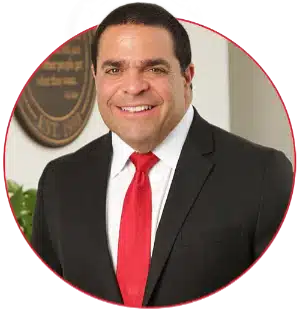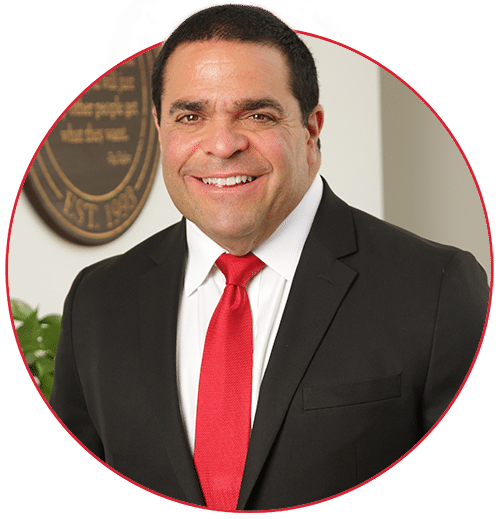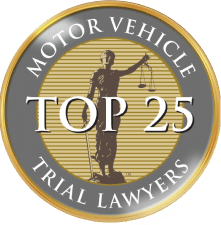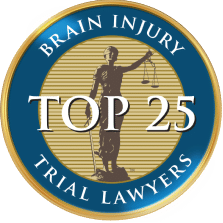Does Health Insurance Cover Car Accident Bills?
Last updated Thursday, October 31st, 2024

After a car crash, amidst the chaos and recovery, a critical concern is whether your health insurance will help with the bills. The coverage for car accident injuries from your health insurance is not always straightforward – it often kicks in after your auto insurance reaches its limits. In this article, we’ll guide you through the often-complex interplay of health and auto insurance when you’re faced with medical bills after an accident, detailing factors like coverage limits, when health insurance takes over, and what to expect in the claims process. Specifically, we will address the question: “does health insurance cover car accident bills?”
Key Takeaways
- Health insurance may cover car accident injuries after auto insurance limits are exhausted, subject to co-pays, deductibles, and plan-specific coverage details, with the responsible party’s insurance potentially covering costs if sufficiently insured.
- Auto insurance policies, with liability coverage, PIP, and MedPay, are primary financial protections against car accident bills; they cover medical expenses, lost wages, and other relevant costs up to policy limits without requiring deductibles.
- Maximizing recovery from car accident expenses involves navigating the claims process, utilizing health coverage effectively, negotiating care costs, and possibly pursuing legal action for further compensation beyond insurance payments.
Health Insurance and Car Accident Injuries
Car accident injuries can be covered by health insurance, although there are various factors to take into account. One must remember that health insurance only comes into play after exhausting all applicable auto insurance policies. Your car insurance company will cover your medical bills up to your policy limits as the first step. This is the meaning of this. Once your auto insurance coverage is exhausted, your health insurance can step in to cover additional medical treatment until you reach that policy limit. This ensures you have adequate coverage for all necessary medical care..
However, the extent to which your health insurance will cover your medical expenses depends on several factors, including:
- Coverage limits
- Co-pays
- Deductibles
- The type of health insurance plan you have
Furthermore, the at fault driver may ultimately be responsible for settling your medical expenses if there is sufficient insurance coverage available.
Health Insurance Coverage Limits
Health insurance coverage limits pertain to the maximum amount of benefits that an insurance plan will provide within a specific time frame. These limits can affect the scope of coverage for car accident injuries.
Health insurance can play a role in covering medical expenses related to car accidents, but there may also be contributions from your auto insurance policy, depending on the state and specific insurance coverages. Keep in mind, health insurance limits usually encompass a broad spectrum of medical services, including:
- Doctors’ services
- Hospital care
- Prescription drugs
- Mental health services
Co-Pays and Deductibles
Another important factor to consider when understanding health insurance coverage for car accident injuries is the concept of co-pays and deductibles. A co-pay is a fixed amount you pay for a covered service, while a deductible is the amount you pay for healthcare services before your insurance coverage starts.
Co-pays and deductibles can significantly impact your out-of-pocket expenses for healthcare services and can result in you having to cover a portion of your medical expenses upfront before your health insurance begins to pay.
Types of Health Insurance Plans
The type of health insurance plan you have can also influence the coverage for car accident injuries. There are several types of health insurance plans, including:
- Health Maintenance Organizations (HMOs)
- Preferred Provider Organizations (PPOs)
- Exclusive Provider Organizations (EPOs)
- Point of Service (POS) plans
Each of these plans has its own rules and requirements about which doctors you can see and what procedures are covered.
While selecting a health insurance plan, ensure it covers injuries resulting from car accidents and prioritizes the use of personal injury protection (PIP) or medical payments (MedPay) coverage available through auto insurance.
The Role of Auto Insurance
Though health insurance is vital in covering car accident bills, auto insurance holds equal significance. Auto insurance often serves as the first line of defense, with liability coverage, personal injury protection (PIP), and medical payments coverage (MedPay) being key components.
Liability coverage is a fundamental component of car insurance that covers most medical expenses associated with car accidents up to the limits of the at-fault driver’s policy. PIP, on the other hand, provides coverage for various expenses such as medical bills, lost wages, and even funeral costs. Lastly, MedPay coverage offers reimbursement for medical expenses incurred.
Liability Coverage
Liability coverage in auto insurance provides financial protection if you’re found to be at fault in an auto accident. It assists in covering medical expenses for injured parties and property damage costs. The payout amount in liability coverage depends on the per-occurrence limit and aggregate limit specified in the policy.
Bear in mind, however, that liability coverage does not account for damages to your own vehicle.
Personal Injury Protection (PIP)
Personal Injury Protection (PIP) in auto insurance is key in covering car accident injuries. It provides coverage for a range of expenses, from medical bills and lost wages to funeral costs. PIP coverage is more comprehensive than MedPay as it covers not just medical bills but also other losses such as lost wages.
One should be aware that PIP and MedPay do not necessitate out-of-pocket deductibles.
Medical Payments Coverage (MedPay)
Medical Payments Coverage (MedPay) is another key aspect of auto insurance that provides reimbursement for medical expenses. It’s a feature available on most personal automobile insurance policies and provides coverage under your own car insurance policy to cover medical expenses resulting from a car accident.
MedPay can significantly alleviate the financial impact of an accident by providing coverage for medical expenses, which can average as high as $57,000 in medical costs after a car accident.
Navigating the Claims Process
After comprehending the role of health and auto insurance in covering car accident bills, understanding the navigation of the
The first step is to file a claim with your car insurance company. This involves:
- Contacting your insurance company
- Providing them with information about the accident
- Inquiring about your insurance coverage
- Obtaining an estimate
- Working with the insurance adjuster.
Simultaneously, you’ll need to coordinate benefits with your health insurance provider. This includes submitting medical bills to them and allowing your insurance companies to coordinate benefits to prevent duplicate payments.
Filing Claims with Car Insurance Company
Filing a claim with your car insurance company after an accident involves several steps. First, you’ll need to contact your insurance company as soon as possible after the accident. Provide them with as much information as you can about the accident, including the names, contact information, insurance information, and vehicle information of all parties involved. You’ll also need to provide the location, date, and time of the accident. Also, be sure to inquire about the timeframe for filing a claim, as this varies by state.
Coordinating Benefits with Health Insurance Provider
Coordinating benefits with your health insurance provider is a critical part of the claims process. This involves using your PIP or MedPay car insurance coverage first, before submitting your medical bills to your health insurance provider. You should also reach out to the Benefits Coordination & Recovery Center (BCRC) if you’re anticipating a settlement, judgment, award, or other payment related to your accident injuries.
Remember that health insurance companies, through your own health insurance, may have negotiated rates that can reduce your out-of-pocket expenses.
Handling Disputes and Delays
The claims process may not always be straightforward, with potential disputes and delays making it more complex. In such scenarios, maintaining regular communication with your insurance providers and considering legal counsel can be effective in managing these complexities.
Typical disputes can revolve around disputing fault or negotiating settlements. Engaging a personal injury lawyer could be particularly helpful in such situations as they can assist in resolving disputes by negotiating with insurance companies, advocating for your rights, and ensuring you receive fair compensation for your injuries and losses.
Legal Considerations and Personal Injury Cases
Apart from dealing with the insurance companies, there are also legal considerations to take into account when it comes to personal injury cases. If your medical bills and lost wages surpass the payments from insurance policies, you may consider initiating a personal injury claim against the negligent parties responsible for the accident to secure additional financial assistance. Having a well-coordinated strategy in paying medical bills after a car accident can impact the amount of settlement you receive, as it can directly influence the negotiations process.
When your health insurance company requests repayment from your settlement, you might be obligated to allocate a portion of your settlement funds to reimburse the health insurer. Apart from medical expenses, the responsible party may also be required to reimburse for lost wages resulting from the injuries and possibly other factors such as disability.
Personal Injury Claims
A personal injury claim involves pursuing compensation for any bodily harm or injury sustained due to the accident. This includes both minor injuries and the experience of pain and suffering. To initiate a personal injury claim, you’ll need to collect pertinent information about the incident, such as the contact details of all parties and witnesses, as well as document the accident and any resulting injuries.
Seeking legal assistance is advisable for assessing damages and navigating the legal procedures.
Settlement Negotiations
Settlement negotiations form an integral part of personal injury claims. Gaining a comprehensive understanding of the accident’s impact on damages and costs is essential, as is assertiveness in negotiations to secure a fair settlement offer.
Maintaining comprehensive documentation of the accident and its impact is crucial for substantiating claims during the negotiation process, potentially resulting in a more favorable settlement. If the insurance company’s settlement offer appears unjustified, it is essential to ask for their reasoning or justification for the offer to evaluate its fairness and accuracy in reflecting the sustained damages.
Liens and Reimbursement
Finally, let’s discuss liens and reimbursement. A lien refers to bills that are placed ‘on hold’ and are paid out of any settlement money from a personal injury claim. This arrangement allows patients to receive medical treatment without having to pay out of pocket immediately after an accident.
To obtain a medical lien, you must formally notify the pertinent healthcare provider or agency of the injury, undergo required treatments, and ensure that the lien is established. Medical liens significantly influence personal injury settlements by ensuring that medical expenses are given priority and settled first from the overall settlement amount.
Maximizing Your Recovery
Having grasped the complexities of health and auto insurance in covering car accident bills and the claims process, the next step is to explore how to maximize your recovery after a car accident. This can be achieved through utilizing health insurance for medical bills, negotiating discounts and rates, and seeking additional compensation.
Utilizing your health insurance to cover medical expenses after a car accident can optimize the compensation you receive from your car insurance company once your claim is resolved. At the same time, you can negotiate discounts and rates with your healthcare providers to further reduce your out-of-pocket expenses. Lastly, if your medical bills and lost wages surpass the payments from insurance policies, seeking legal action to recover expenses for medical treatment, emotional distress, and income loss can help secure additional compensation.
Using Health Insurance for Medical Bills
Utilizing your health insurance to cover medical expenses is a highly effective way to maximize your recovery after a car accident. It can lower the overall cost of the bills, as health insurance typically makes payments at a discounted rate. This approach enables you to concentrate more on your recovery, with the assurance that your medical bills are managed.
Negotiating Discounts and Rates
Negotiating discounts and rates with healthcare providers can also aid in minimizing your financial burden after a car accident. Here are some strategies to consider:
- Initiate contact with the provider and communicate your financial limitations.
- Request a reduction in fees or rates.
- Review your medical records to identify unnecessary or unrelated procedures.
- Learn about fees and inquire about potential discounts.
- Reach out to your insurance provider for assistance.
These strategies can help you navigate the financial aspects of your medical care after a car accident.
Patient advocates can also play a vital role in supporting patients by facilitating the review of medical bills, negotiating lower prices or payment plans, and identifying support groups.
Seeking Additional Compensation
Finally, seeking additional compensation can play a pivotal role in maximizing your recovery after a car accident. It may involve launching a legal action to recover expenses for medical treatment, emotional distress, and income loss. The process for initiating a legal action includes preparing a comprehensive complaint delineating the details of the case, officially lodging the complaint with the court, notifying the responsible party, and serving the complaint on the defendant.
The amount of additional compensation you can receive depends on several factors, including the fault determination for the accident, the severity of your injuries, and the overall liability attributed to the crash.
Personal injury protection insurance (PIP) typically covers personal expenses due to an accident, such as medical costs and lost income, for both the policyholder and their passengers. It is designed to provide financial protection in the event of injuries sustained in an automobile accident. Personal injury protection (PIP) coverage pays for all accident-related medical costs, regardless of fault, for you and your passengers. If the damages exceed the policy limits, the defendant is personally liable for the rest, and their other assets, such as an umbrella policy, may be used to cover the remaining amount. This ensures that the full amount of the case is legally obligated to be paid by the defendant. Health insurance can cover car accident injuries, but only after all applicable auto insurance policies have been exhausted, and factors like coverage limits and deductibles can affect the scope of coverage.Frequently Asked Questions
What type of insurance pays personal expenses due to an accident?
What type of auto insurance pays for all accident related medical costs?
Who pays the damages that exceed the policy limits?
What role does health insurance play in covering car accident injuries?











